Travelling Frog
Nice is Nice
A journey into Nice and along the Cote D'Azur
2025 POSTS
Tony Leigh
1/2/202610 min read
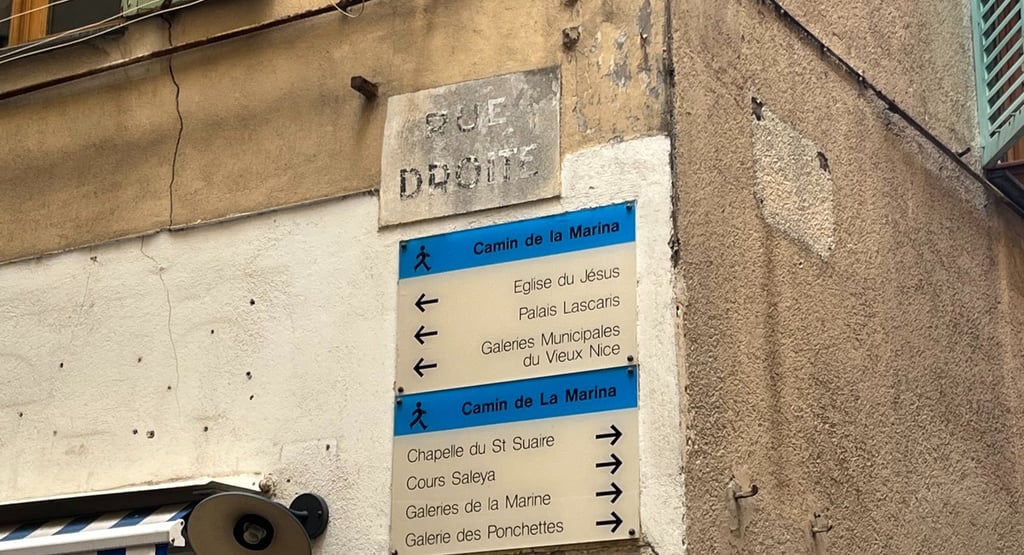

Nice in Nice
Love the Lizzie Line. A civilised way to be transported to Heathrow. Even, as this was, at 5.30am. A civilised flight followed by an equally civilised early arrival. Marvellous.
If the opportunity arises sit on the left hand side of the plane. Descending, the Pyrenees are a constant companion. As they gracefully faded into the background the pilot kindly flew over the Mediterranean along the Côte d’Azur frontage. Lovely chap.
Uber from airport to hotel mildly irritating. Our original driver, presumably due to a more lucrative offer, deserted. According to Uber, we then became a priority. Unfortunately, the 2-3 other couples nearby had been made similar promises. A 15 minute wait ensued.
Nevertheless, our driver was lovely, the journey short and cost reasonable. And the first time in a Tesla – a model Y. I know Musk is more obnoxious than Trump (an achievement in itself) but his cars are genuinely impressive. And I’m not a lover of SUVs. Range Rover excepted.
After relinquishing our bags to a kindly chap at the hotel we wandered like a cloud. Or a tourist in Nice. Take your pick.
The Promenade des Tony (Anglais) offers sparkly views over the Mediterranean. So named as promenade funded by British benefactors in the early 19th century. They, apparently, had a fondness for Nice. Not a difficult concept to understand.
A pebble beach surprised. We both expected golden sands not Kent. Nevertheless, it’s a beautiful bay curving majestically and, on a sunny Sunday, populated by locals wearing just enough to be legal.
The old town, more extensive than either were led to believe, dates back to the 16th century. Narrow streets, archaeological delights and diverse shopping opportunities (some good, some tacky) make for a wonderful wander.
Rue Droite, embedded in the old town, has bars, restaurants aplenty. Plus the occasional church to wash away, if inclined, those guilty pleasures. Most tourist make for it, we’d walked down it, possibly twice, before realising this was the place to be seen. Oh well.
The sizable Cours Saleya Market lurks a couple of block behind the sea front. It’s known for flowers and local produce and bustling with tourists and locals alike. Long queues had formed in front of the latest Trip Advisor sensation.
Finished our first day at Beer District. Serendipity arranged said craft beer emporium a few minutes stroll from our hotel. Loving that serendipity vibe.
Beer District doesn’t, unfortunately, open until 6pm. Every day. It closes 12,30am. Every day. Consistent. Fifteen taps of beery besties plus a sprinkling of cans in a fridge behind the bar entice. The vast majority were French – as it should be – with the odd European interloper.
Ale quality, for a wine obsessed country, was most palatable.
Loads of indoor and outdoor derriere alighting. That said, music inside a tad loud and a lot rubbish so outside beckoned. Though a smidgin past 6pm warm enough to enjoy the great outdoors. Marvelous.
MONACO/VILLEFRANCHE SUR MER
Monaco
Monaco bound before 10am, I’d actually showered and was ready for breakfast by 7.30am. And thoughtfully woke Sus up. We were to reunite with our hotel room 10 hours later.
I’d interrailed, with school chum Bush, to Monaco 40 years ago and have vague memories of disappointment. Recently caught up with chum Bush, and reminisced about that interrailing month. It’s amazing what each remembers and what each doesn’t.
Sus had never visited but keen to add another country to her list.
We bought an SNCF day pass. Think of it as a hop on, hop off bus along the French Riviera. Though more train oriented. And at €12.50, rather reasonable.
Nice to Monaco is a meagre 20 minutes. The casino (built 1856) was the obvious place to start. Entry to the public spaces is free. Entry to the ‘should I sell the children’ gambling rooms costs €19. Having no children to sell we declined.
The interior is a tad gaudy for my tastes but worth a gander. The exterior, on the other hand, is rather handsome.
A stroll through a road tunnel (classy) brought us to Port Hercule and the Yacht Club de Monaco. And not a Agatha Christie detective to be seen. Huge and obscenely expensive super yachts preened. Monstrous beasts eliciting both feelings of superiority and of jealousy. Neither especially endearing.
The main drag, Rue Grimaldi, is short but pretty. Buildings of a similar vintage to the casino elegantly line both sides.
Construction is alive and well in Monaco. Much, and most of more modern efforts, are mundane, unimaginative and, in a few cases, quite ugly. Few handsome 19th century building survive.
Monaco is a petrolhead’s soggy dream. Expensive, beautiful cars roam the streets and showrooms. Formula 1 is ever present. An ad for latest Rolls Royce was being shot outside the casino. I, being a petrolhead, wasn’t immune.
Monaco is not horrible. It’s clean, occasionally handsome, friendly with free toilets aplenty. Nevertheless, I struggle to understand the appeal. Do the few sights, move onto somewhere more interesting.
Villefranche-Sur-Mer
A short train journey, towards Nice, deposited us somewhere more interesting. Villefranche-Sur-Mer.
Villefranche is a classic French Riviera town. Pretty, historical, filled with tourists eating in overrated restaurants. The harbour is unnaturally deep making for a strategic base during 20th century conflicts. Always a selling point.
From the train station we meandered onto the waterfront before the old town proper. Picturesque indeed.
The Citadel and Chapelle Saint Pierre both date back to the 16th century. The harbour, Eglise Saint Michel and many of the dwellings were constructed in the 17th century. And the Rue Obscure, a passageway burying beneath the harbour, originates from the 13th century. The latter is spookily atmospheric.
The citadel house museums, the town hall, shops and an open air theatre. Probably. We never went in. Or realised it was there. We somehow contrived to walk past the main entrance without actually wondering what might be inside. Oh well.
Non of the tourist eating establishments appealed. After consulting chum google we headed to the compact modern centre, inevitably situated above the old town, and Lu Delici. No views, but delicious home cooked food.
Whilst wandering these higher echelons of the town we’d spotted the 16th century Fort du Mont Alban. Perched, as one would expect, inconveniently on a hilltop.
Curiosity overcame a dislike of steps. Initially steep steps cut through attractive neighbourhoods. Before deteriorating into a broken path. It’s a hard slog. According to our clever iPhones we climbed the equivalent of 40 flights. I’m not one to argue.
The fort is not open to the public. Nevertheless, it’s a fearsome looking beast. Fight your way up the hill only to be put out of your misery by some bloke with a crossbow. No thanks.
The views, however, are spectacular. Down into the bay and along the Riviera. Undoubtedly, the finest vistas encountered.
The descent back down wound pleasantly through wooded areas and further neighbourhoods.
On a brief shortcut into said woods we discovered 3 boules courts. The waft of weed suggested some were not taking it as seriously as others.
A stroll along the Promenade des Anglais, a supermarket (Monoprix) stop all ended at Beer District. A very long and very enjoyable day.
Update. A case of the FOMOs meant a return citadel trip 2 days later. Rather glad we did. The Citadel was being renovated, and though not especially large, is a wonderful glance into times gone by. The open air theatre is particularly charming. We both jumped on stage to release our inner Gielgud.
Nice Nice Day
Post Brekkie, strolling, we noticed a yellow bulldozer frolicking on the beach. Not really sure why. Perhaps a supervisor had asked Pierre to take the bulldozer onto the beach, wade in and out of the water, move a few pebbles around. It’ll amuse the tourists. It worked. We, amongst others, were captivated.
Another must see, another must climb. Really. Castle Hill. Sadly, in 1706 Louis XIV destroyed the fortifications, castle and cathedral. Bit mean. Remnants remain alongside landscaped gardens and walks, an impressive waterfall, cafes and the ever important panoramic views. School children abound.
Back down in the town the bijou but beautiful Baroque Place Rossetti, considered the heart of Vieux Nice, houses the ornate Cathédrale Sainte Reparate. Construction began in 1650, was completed in 1685 with further additions over time. Fenocchio’s, an apparently famous ice cream maker, also call the square home. Location, location, location. Alternative restaurants and cafes proliferate.
We did pop into the Cathédrale though left no lasting impression. Not our cup of Baroque.
Garibaldi Square, in the North East of the old city, is the oldest large square in Nice. Though restored, and again Baroque (1773 to 1784), the square originally smoothed trade and commerce. Now, indicative of our times, it teems with restaurants, bars and cafes. A huge fountain housing a (wet) statue of General Guiseppe Garibaldi.
We liked it. Garibaldi Square is an almost soothing spot for lingering (in a non-creepy way) and people watch. So we did.
Respite back at the hotel before Sus discovered (google helped) Allez Hops, an enjoyable 20 minutes stroll from our hotel. Allez Hops is part tap room, part bottle shop, part brewery. The holy trinity of beer. Nine taps delight with bottles and cans on shelves and in a fridge.
There’s inside seating shared with brewing paraphernalia. As should be. Outside pavement seating is shared with what appears to be an attractive neighbourhood.
The head brewer is American. Julie, also American and his wife, was on bar duties. We discovered both have lived in Nice for many years and have little intention of returning to the US.
A genuinely convivial neighbourhood bar/tap room/brewery. Time constraints doomed us to just the one visit.
Antibes
Was a last minute decision. Èze (not the talented Crystal Palace midfielder) another option. Èze (not the talented Crystal Palace midfielder) was train, plus bus (or walk), Antibes was train. Twenty minutes. Destination decided.
Antibes has ‘welcomed’ the usual occupier suspects. Founded by those seafaring Greeks (5th century BC), taken on by the Romans, then numerous nasty marauders before flourishing under the French (15th century). Sea one side, snowed covered mountain the other. Well played France. Bit of a gem this one.
Antibes, as one might expect, has harbours for all tastes. If not pockets. Strolling from the railway station it’s difficult to miss Port Vauban, adjacent to the old town and overlooked by Fort Carré, a16th-century fortress. Star shaped apparently. On leaving Antibes we tried to get close and personal. Never did. The Fort was closed. For renovation. We admired from afar.
Port Vauban is a monster, as are many of obscenely large, gawp worthy, super yacht berthed there. By most a top trump metric it’s the largest marina on the Mediterranean. The port dates all the way back to those cheeky Greeks. I suspect both ships and amenities have had an upgrade. Though now a marina Port Vauban previously jobbed as both a military and trading hub.
Meander, chose your favourite, sigh wistfully and head to Vieille Ville d’Antibes. The old town. Conveniently walled (constructed in 16th century) against unwanted quests. We’ve all had them.
Built on both Greek and Roman underpinnings (an amphitheatre was still visible in the late 17th century) the present town dates back to 16th century. Meander the mazey, cobbled streets. Admire, perhaps indulge, the independents shops and eateries. We did. Enchanting.
Rue de la République, slicing through the centre of Vieille Ville d’Antibes, is the primary, pedestrianised retail street of the city. An eclectic collection of shops lends an attractive and bustling vibe. Marché Provençal, with its handsome 1920s architecture, entices visitors with fresh Provence produce and local handicrafts. Delightful.
Formerly the Château Grimaldi, originally constructed in the early 16th century, now houses the Picasso Museum. Renamed the Musée Picasso in 1966, two decades after Picasso had occupied a castle guard room there for a mere six months before the cold defeated him. Explains why Hastings doesn’t have a Picasso Museum.
Antibes Cathedral, a near neighbour, was constructed in the 12th century, in a Romanesque and Gothic style, before a Baroque-style facade was added in the 17th century. A handsome devil.
The city Ramparts, protecting Antibes from marauding mariners, again were built in the 16th century. By the Vauban of marina fame. He probably had help. These are now a popular promenade showcasing the Med and Antibes coast one side and the old town the other. The planting en route (that’s my French exhausted) is especially agreeable.
On leaving Antibes, FOMO hit. This was when we revisited Villefranche-Sur-Mer and it’s Citadel.
We both loved Antibes, genuinely exceeded any pre-conceived expectations. Unless you’re country bagging, and only have time for one, make it Antibes and not Monaco.
Observations
Nice locals, for the most part, are a friendly and charming bunch.
Pedestrian crossings can be a little more exciting than perhaps they should. Drivers will studiously ignore those attempting to cross. Take care.
Street names, in Nice old town, are in 2 languages. French and the local dialect, Niçois.
A canon fires in Nice everyday at noon – the boom at noon. Apparently, a wealthy Englishman, who wintered in Nice, and fascinated by the measurement of time, was the culprit. He sought and received permission to fire a canon at noon for the benefit of the residents of his adopted city. This was 1863. Smart phones were a little way off.
The coast is surprisingly, and perhaps not surprisingly, built up. Assorted towns melding into one.
Conclusions
This is a splendid slice of France. Both Nice and Antibes are each worthy of a few days. Additionally, both offer great bases for exploring the French Riviera.
Being urbanite groupies we preferred the above cities though Villefranche-Sur-Mer is cute with spectacular vistas from Fort du Mont Alban. Monaco, less keen. Apparently, not everything changes in 40 years.
Thanks for reading. Tony (May 2025)
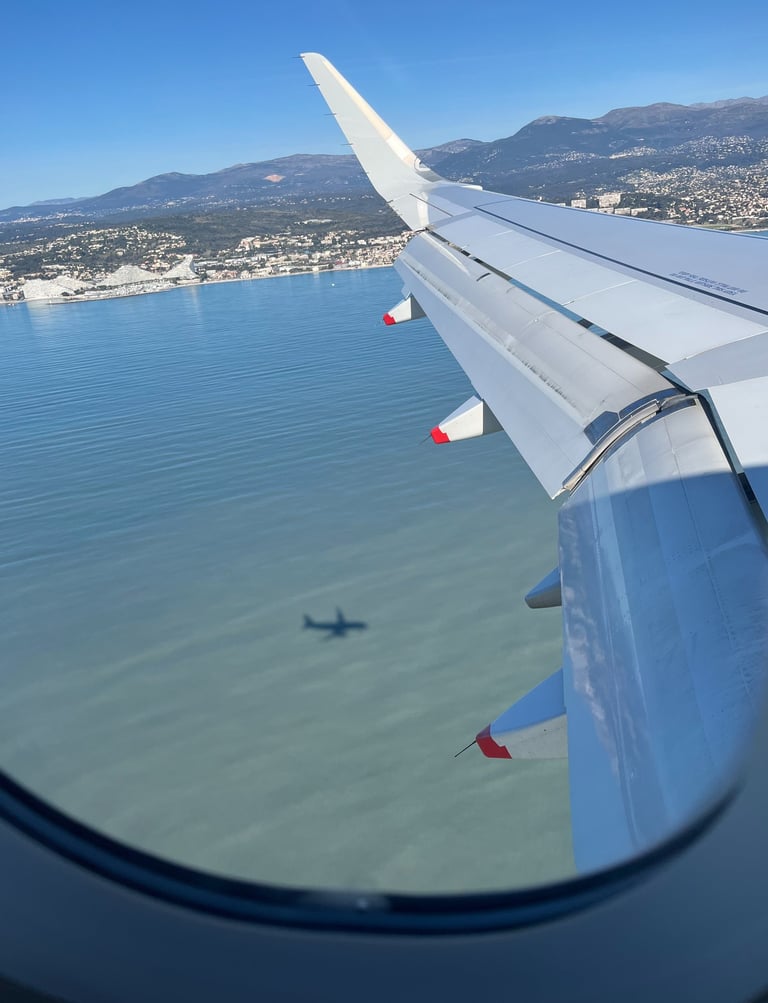

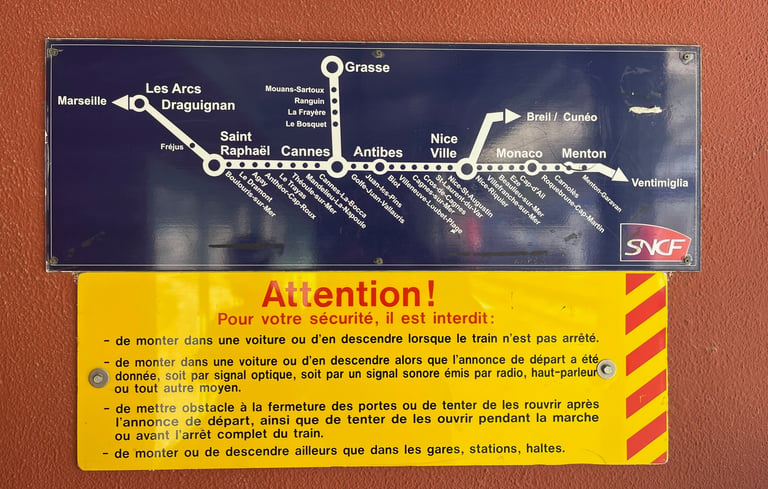

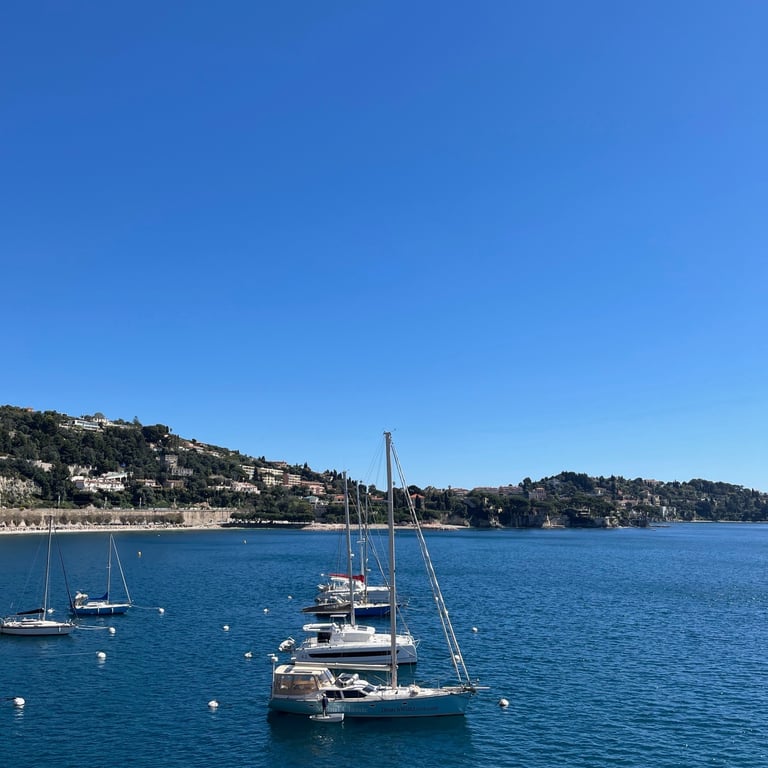

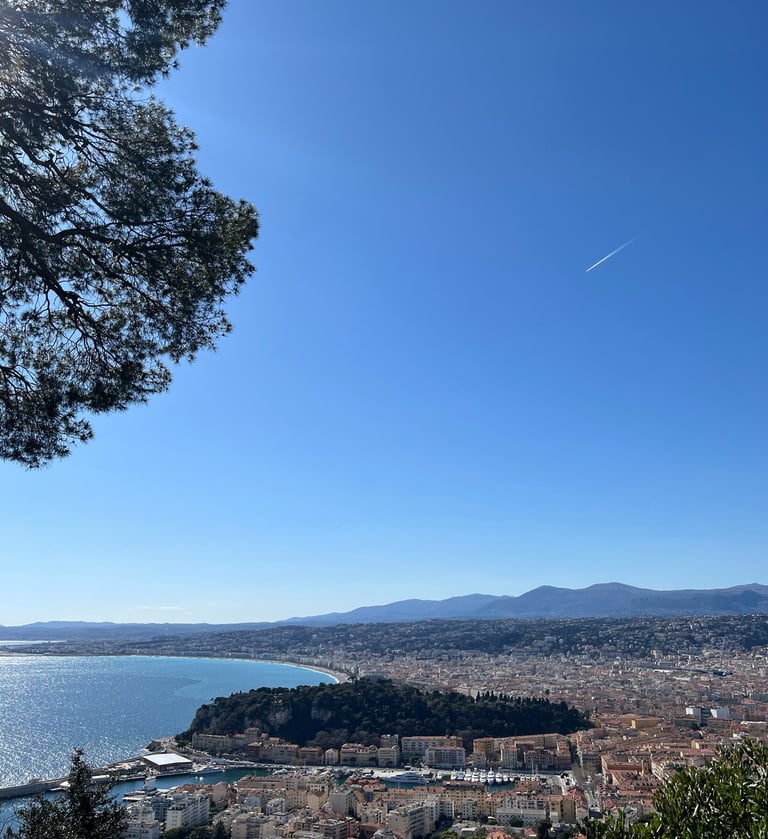

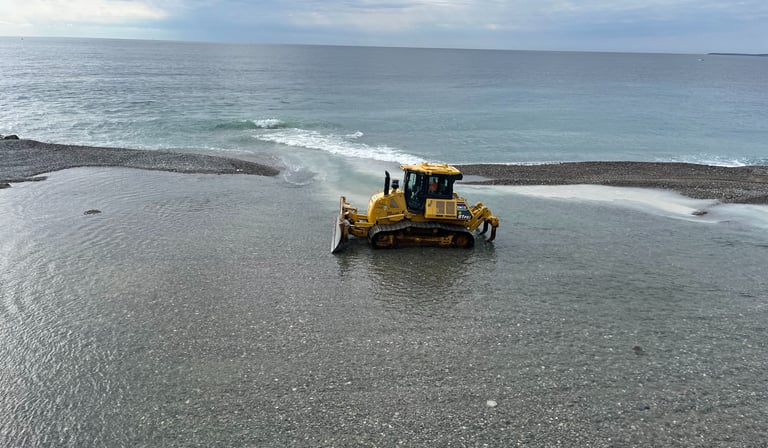

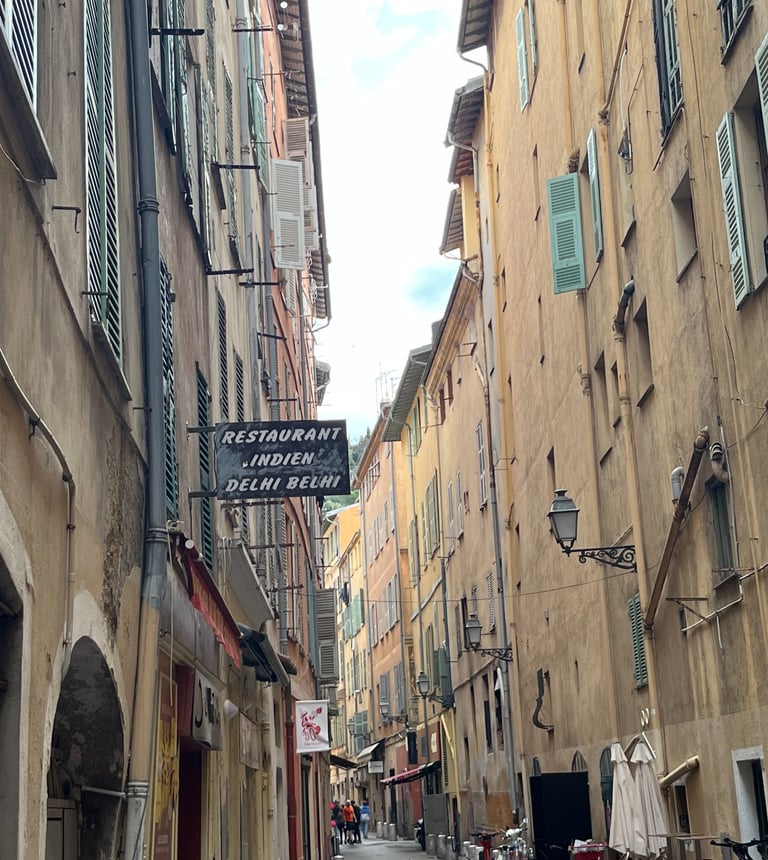

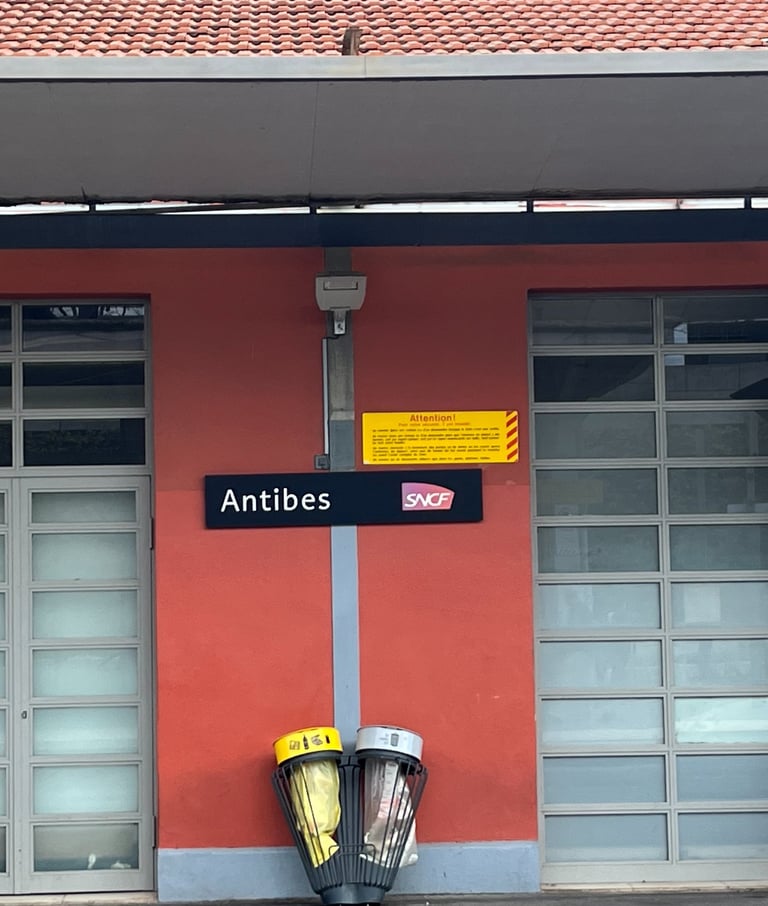



Explore
Travel from a more mature perspective.
Discover
tony@travellingfrogblog.co.uk
© 2025. All rights reserved.